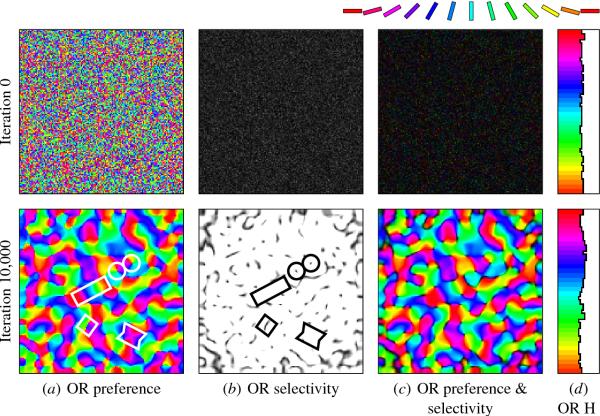
Click on the image to see a PDF version (for zooming in)
Fig. 5.9. Self-organization of the orientation map. The
orientation preference and selectivity of each neuron was computed
before (top row) and after selforganization (bottom row). The
preferences are color coded and selectivity represented in gray scale
as in Figure 2.4. (a) The orientation preferences were initially
random, but over self-organization, the network developed a smoothly
varying orientation map. The map contains all the features found in
animal maps, such as linear zones, pairs of pinwheels, saddle points,
and fractures (outlined as in Figure 2.4). (b) Before
self-organization, the neurons are unselective (i.e. dark), but nearly
all of the self-organized neurons are highly selective (light). (c)
Overlaying the orientation and selectivity plots (by representing
selectivity with color saturation as in Figure 5.7) shows that regions
of low selectivity in the self-organized map tend to occur near
pinwheel centers and along fractures. (d) Histograms of the number of
neurons preferring each orientation (OR H) are essentially flat
because the initial weight patterns were random, the training inputs
included all orientations equally, and LISSOM does not have artifacts
that would bias its preferences. These plots show that LISSOM can
develop biologically realistic orientation maps through
self-organization based on abstract input patterns. An animated demo
of the self-organizing process can be seen at ...
|